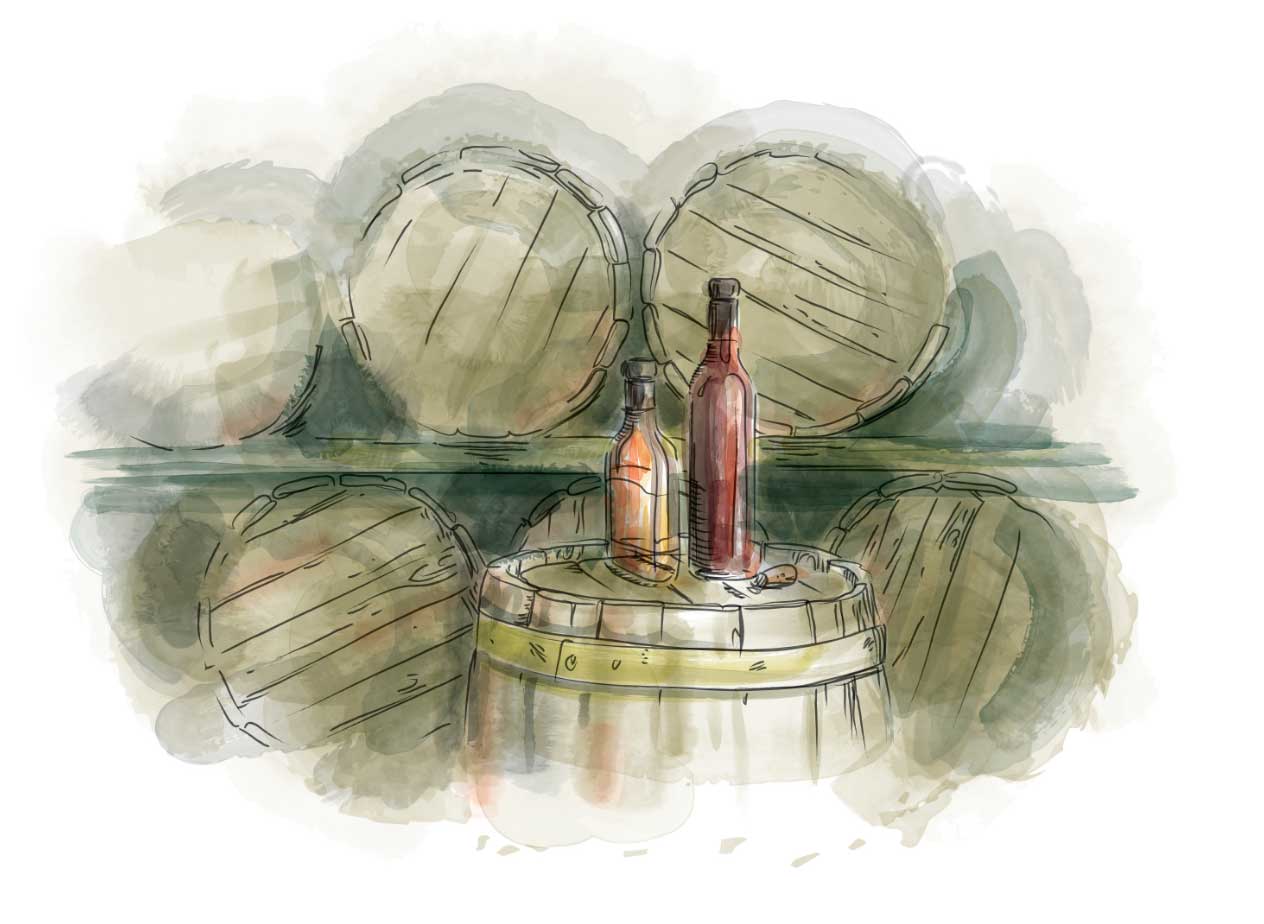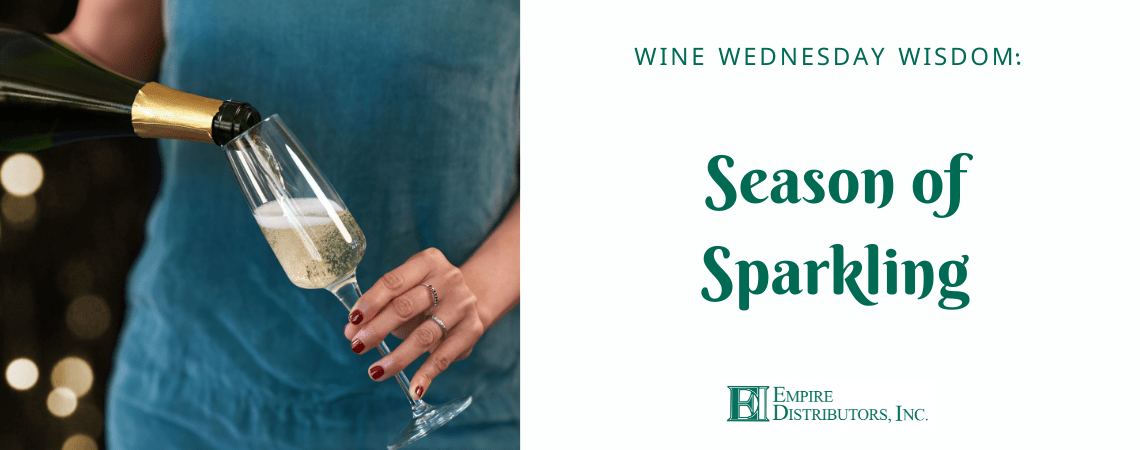Are you 21
or older?
You must be 21 or older to enter. Please Drink Responsibly

You must be 21 or older to enter. Please Drink Responsibly


There’s just something about the “pop” of a cork that just makes the mouth water. Sparkling wines are one of the more versatile styles of wine out there.
During fermentation, yeast turns sugars into alcohol and produces a few additional by-products. One of these by-products is Carbon Dioxide, which is responsible for the “sparkle” of certain wines and the traditional bubbles found in beer. The “traditional method” for making Sparkling Wines is a two-step process. First, a “base wine” is made that is generally low alcohol and high in natural acidity. The second step is adding a mixture of yeast and sugar to this wine causing a secondary fermentation. Wines from the Champagne region of France, and wines made in the “traditional style”, the secondary fermentation occurs inside the bottle. Some other styles of sparkling wine production, like most Prosecco, have their secondary fermentation take place in large tanks. There are other ways to capture the bubbles in a wine besides starting a secondary fermentation. Some producers may halt the fermentation creating a wine with natural residual sugars and bubbles. This is how Moscato d’Asti is usually produced. There are other methods as well to create those bubbles, even including carbonating the wine much like the way sodas or seltzers are made.
A similarity for most every traditional sparkling wine would be the original growing region. Because of the additional increase of alcohol from the secondary fermentation, these wines are produced in areas known for very cool climates. The grapes are harvested much less ripe than the grapes harvested for normal wines. This assures the producers of high acid levels and low sugars resulting in lower alcohol levels. The most famous grapes used in the production of Sparkling Wines would be Chardonnay and Pinot Noir. Pinot Meunier is another grape that can sometimes make up the blend and in countries like Italy or Spain we find traditional grapes like Glera and Muscat or Macabeo and Xarel-lo, respectively. While Champagne may only come from a certain region in northern France, there are so many other great regions that produce great fizzy wine. Cava from Spain and Franciacorta from Italy are universally delicious. Oregon and California produce some remarkable sparkling wine in the United States. Many different countries have unique styles and grapes used and in the world of wine it seems that everything has been tried at least once! There are even great examples of Sparkling Shiraz from Australia!
Because of the naturally high acid levels, Sparkling Wines work with many different types of food. I can’t stress how well something as ordinary as French Fries pair with a bottle of Sparkling Wine! While we sometimes think Champagne is mainly used for celebrations or launching a yacht, it deserves as much space on the dinner table as any other wine. Variety is the spice of life, so pop some bottles!
*Subject to market availability & pricing.
Reach out with any questions you may have to see just how responsive, knowledgeable and downright friendly an Empire Representative can be.